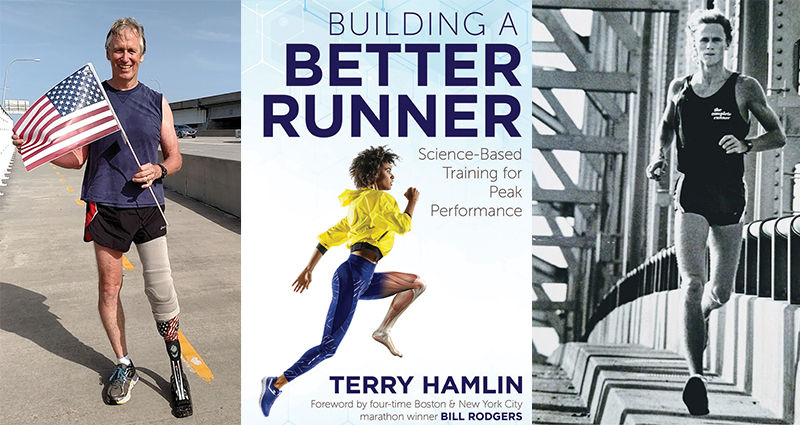Terry Hamlin's first book inspires runners to go the distance

(Left to right) Five percent of the proceeds from Terry Hamlin's book benefit the MUSC Foundation for the Hollings Cancer Center; Terry Hamlin's book; Terry Hamlin runs across the Silas N. Pearman Bridge in 1980.
Terry Hamlin has covered a lot of ground in his 68 years—and at a dizzying pace. The Charleston native, who began running at 14 to stay fit for surfing, briefly joined the University of South Carolina cross-country team before being swept up in the road-racing boom of the 1970s. On the heels of Frank Shorter’s 1972 Olympic gold and Bill Rodgers’s 1975 Boston Marathon victory, Hamlin founded the Charleston Running Club and helped set in motion the Cooper River Bridge Run. But that was just the warm-up.
For four decades, the USA Track & Field-certified and Road Runners Club of America coach has trained athletes around the world. “My method is grounded in science and structured training,” Hamlin explains. He’s expertly piloted qualifiers to the Olympic trials, successfully experimented with treadmill training, and patiently transformed nonathletes into half-marathon finishers. Even after he lost his left leg in a farm accident 10 years ago, Hamlin continues to make strides as an amputee runner and advocate for mobility-impaired competitors.
This past fall, Hamlin released the first in what he hopes is a series of distance running manuals. Building a Better Runner: Science-based Training for Peak Performance (Vertel) delves into “what happens to the human body on a cellular level when we run,” explains the author. Hamlin’s method focuses first on building endurance and then addresses strength and speed. The book includes sections on biomechanics, stretching, weight training, and injuries. While much of the information seems geared toward established and elite athletes who log 30 to 100 miles weekly, the user-friendly book also offers beginning runners a leg up with its step-by-step course for getting into the sport.
“When I first started running, I couldn’t make it more than once around the block. But in two weeks, I could run around twice,” says Hamlin, noting that the sport simply requires putting one foot in front of the other. “For me, running is a moving prayer. As I cruise along, I can think about my faith, how to solve a problem, or nothing at all.”
Step up your running game in the New Year with pointers from the coach:
■ “See your physician.” Make sure you’re physically ready to start a running program.
■ “Get a good pair of running shoes.” Everyone’s feet differ, so don’t just grab a pair off the shelf. Consult with a salesperson that knows the sport.
■ “Pace yourself.” Subtract your age from 220, and then take 65 to 70 percent of that difference. That’s your target heart rate, whether you start with a fast walk or slow jog.
■ “Running is great, but muscle balance is even greater.” Include weight or resistance exercises to maintain overall fitness. Running engages not just the legs, but also core muscles and the upper body.